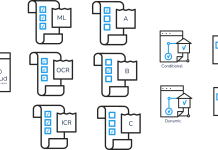Nonprofits and advocacy groups benefit from seamless data quality at the national, state, and local levels
Let’s face it: connecting with elected officials isn’t as easy as it should be. For advocacy groups, nonprofits, and even governments, these challenges can seriously hinder their ability to engage meaningfully with their representatives. That’s where good legislative data comes in—the kind that’s accurate, up-to-date, and easy to use at the national, state, and local levels.
The power of address-to-district matching
If you’ve ever used a ZIP code to identify your representative, you know it’s not foolproof. ZIP codes just aren’t precise enough, especially with evolving maps and legislative changes that come with every election. Today’s data tools solve this by enabling address-to-district matching, which takes precision much higher. Using geospatial data and updated boundaries helps data users get the details right, pinpointing district boundaries to the exact address.
Enabled by data quality tactics and tools, rooftop-level precision in identifying legislative districts improves upon the traditional ZIP+4 method. This enhancement offers a ~3% improvement in accuracy across ~150 million deliverable addresses nationwide, equating to ~4.5 million more precise records. For nonprofits or advocacy groups seeking to apply their resources most powerfully, this increase drives a significant advantage in engaging with representatives. Outreach goes to the right representatives every time, and time and resources are protected by avoiding wasted or mismatched campaign efforts. Equally as important, with seamless data quality integrated into data management processes, nonprofits and advocacy groups are ready for whatever redistricting or legal changes come their way.
Improving data to improve results
Historically, the industry standard for defining congressional districts is to use the data provided by the USPS. The chart below compares specific data values and characteristics that create an impact on legislative outreach and campaigns:
|
Historical congressional data updates via USPS |
Modern data updates powered by legislative-specific third-party data resources |
|
Only available at the federal level. Updated according to the USPS schedule and only after the new districts take effect. Can be potentially erratic and unpredictable; also, is not aligned with the key campaign timelines of advocacy groups.
|
Available for federal, state, and local levels (for cities with populations above 100,000). Updated as soon as election results are called by two sources and available before the new districts take effect and new legislators take office. |
|
Data is specific to a Zip+4 record (covers around 10-20 homes each).
|
Data is specific down to each individual address. |
|
Errors are not easily identified and corrected. |
All data is collected, vetted, and compiled in housewith rigorous quality checks and the ability for immediate corrections. |
|
No promises of updates for out-of-cycle changes. |
Monitors for redrawn districts due to litigation and ad-hoc redistricting; also monitors for special elections and appointments of officials outside of regular election cycles.
|
Legislative data tools are accessible via web services, cloud-based API, and on-premise solutions, ensuring the most convenient and appropriate technology for the data user (from national advocacy and public affairs organizations to small nonprofits). Flexibility and ease of use are key, allowing users to leverage an API, batch district matching service, or bulk data files. Organizations can match their members to districts, provide a legislator lookup tool on their website, or update records in their CRM.
Expanding possibilities with great data
For any group working to pass a bill—for example, changing the landscape of animal welfare or assuring the much-needed modernization of local schools—calls and outreach to as many applicable legislators as possible is crucial. Only clean, accurate data can increase member involvement, reduce inaccuracies, and improve the precision and effectiveness of legislative outreach.
Powerful third-party data tools also monitor changes to officeholder data and legislative districts during and between elections and redistricting cycles. Changes are made to the data every single day. For example, officials’ profile data goes beyond the standard name and contact information and can also track data on websites, photos, biographies, and social media handles. Committee assignments, including subcommittees and leadership titles maintained at a national and state level can be identified. Mapping and geospatial data include boundaries for national, state, and local level districts— and depending on the agency’s need, data can extend to more than 450 cities and counties across the US and Canada.
Geospatial or mapping data takes all this to the next level. It lets you visualize who’s in your district and where they’re located. That’s super handy for building on data-driven civic engagement.
These days, everything is connected. Legislative data isn’t just sitting in a database. It’s powering CRMs, advocacy tools, and even AI-driven platforms. APIs (basically digital bridges for data) make integrating this information into your existing systems easy.
Consider it: advocacy groups can automatically match representatives to petitions or emails. Governments can update their records in real-time, so they’re always ready to answer questions. It’s about making things smoother and smarter—from planning targeted campaigns and spotting trends in your membership or audience to staying ahead of redistricting changes.
In this new era, having accurate, adaptable, and easy-to-use legislative data isn’t just a luxury… it’s essential. When organizations use these tools effectively, they make sure every voice is heard, every message counts and every effort makes a difference. And isn’t that what civic engagement is all about?











